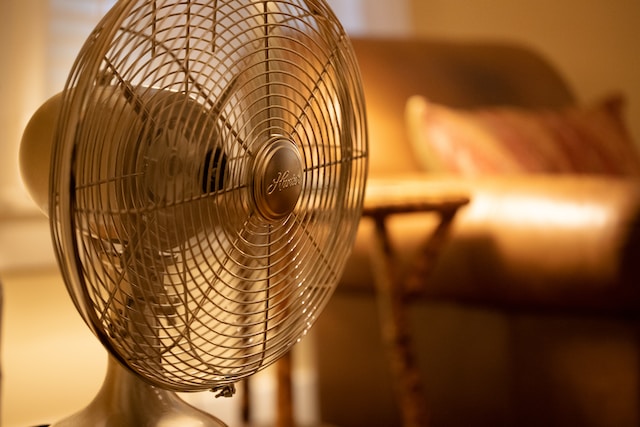Fans are about more than just circulating air; they complement a space’s design. So, finding a fan that combines utility and aesthetics is an important decision.
Whether you’re looking for a pedestal or tower fan, consider the following factors when choosing your perfect match.
Power
Power is a significant factor for fans, as it defines how much airflow they can generate. The power of a fan is usually described in cubic feet per minute, also known as CFM, so look for that number when shopping for one.
Size, speed settings, and motor can vary the power of a fan. The room size you’re planning to use it in should help determine how powerful a fan you need, while features like oscillation and adjustable speed settings make it easier to direct the flow of air where you want it. The motor type can also affect the fan’s power, as innovations have made it possible to produce more energy with less noise. For example, due to their efficiency, DC motors are becoming more common in home fans.
Size
The fan size that best fits your space is an important consideration. Smaller fans can make a lot of noise or need to move more air to cool the room. The wattage of the motor is also a factor as it determines how much electricity the fan consumes.
Choosing the right size fan depends on the square footage of your space and the ceiling height. A good rule of thumb is to select a fan with a blade span of at least twice the room’s square footage.
Other features to consider are whether the fan can be angled or has a sleep timer. An angled head allows you to direct the flow of air for targeted cooling, while a sleep timer lets you program it to turn off when you are sleeping at night.
Style
It is often essential to consider the design and aesthetics of Monte Carlo fans for sale Tampa FL. Some people have specific tastes and decors that need to be accommodated, such as those who want their fan to match their living room. Others seek a more functional style, such as a smart plug or fine-grained speed control. The type and material of the fan blades are another essential factor to consider, particularly for moisture-prone areas such as bathrooms. For example, metal fans are more durable than plastic and are more likely to resist rust. Other features to look for in a fan include: – oscillation, a remote control, and adjustable heights and angles. The right industrial fan will provide a stylish and practical solution for cooling your space.
Energy Efficiency
Ceiling fans use significantly less energy than air conditioners, helping homeowners save on utility bills. Look for DC motors, energy certification, and additional features such as remote controls or lighting options to minimize electricity consumption and maximize the benefits of your new fan.
Manufacturers provide overall fan efficiency ratings, combining the fan and motor performance. This number indicates the number of air changes per hour your chosen lover can perform under standard air conditions.
Using the provided sizing guidelines, select the ideal fan for your space. Small rooms and breakfast nooks work well with 29″ fans, while larger areas up to 400 sq ft will perform best with a 50″ or 54″ fan. Consider the blade size and pitch when selecting a ceiling fan, as larger sizes and steeper angles may consume more energy.
Warranty
The warranty is an essential factor to consider when selecting a fan. It would help if you looked for a manufacturer’s warranty that is at least one year long and covers all parts of the fan. The contract should also be straightforward to understand.
In addition, look for a fan with a removable grille and blades that are easy to clean. This is especially important if you have children who may knock over the fan in your home. It would help to consider whether the fan has a filter that needs to be cleaned or replaced regularly.
Finally, check the fan’s noise level and night mode settings. Does it offer a near-silent sleep setting or a white noise setting that is comfortable for sleeping?

